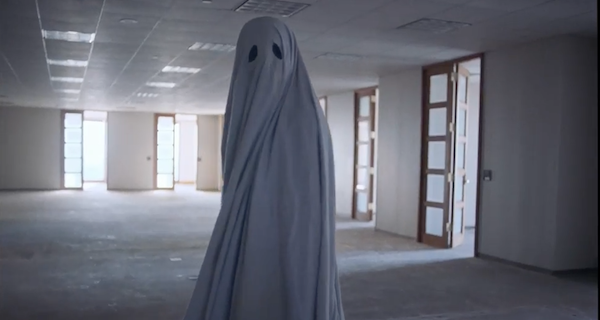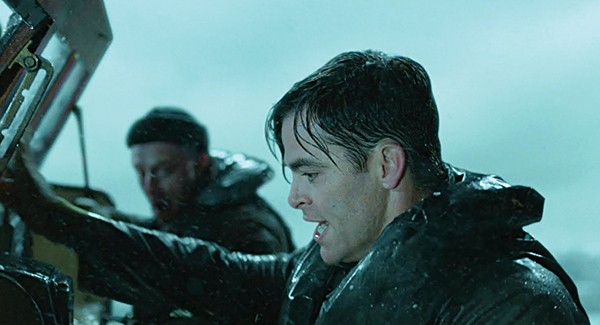Telling a horror story from the point of view of the monster is a time honored method that has produced good results. Think of the endless slate of vampire stories we’ve seen that used this trick, beginning with Ann Rice’s Interview With The Vampire and including the much lamented Twilight saga. Stop motion animation legend Ray Harryhausen once said that his films were “shrines to the monster”. The best movie monsters, like King Kong or The Creature From The Black Lagoon, aren’t evil, per se, but innocent, untamed, and backed into a corner.

David Lowery’s new film, A Ghost Story, makes the monster the protagonist. The big question it puts forward is, what does a haunted house look like to a ghost doing the haunting? Lowery’s answer is: It looks pretty darn sad.
It’s not fair to Lowery or the film to reduce it to the terms of genre, which it resembles only superficially. But it does serve to highlight the depth of Lowery’s achievement. A Ghost Story is not a Paranormal Activity parade of jump scares and spooky sound effects. It is, instead, a meditation on deep time, on the impermanence of all things that seem permanent, and the recurring cycles of human experience that ultimately connect us all.
Our two nameless protagonists are Casey Affleck, a musician struggling to write the perfect song, and Rooney Mara as his wife, a young professional paying the couple’s bills. Like any couple, they have their ups and downs, but they seem genuinely happy with each other. Rooney wants to move out of their cozy but aging suburban home for something nicer, but Casey wants to stay. He feels a sentimental attachment to the old place where they had so many great memories. But before their conflict can be resolved, Casey dies suddenly, leaving Rooney on her own.

To his presumed shock, Casey comes back as a ghost. And we’re not talking about a CGI-heavy Pirates of the Caribbean ghost. Affleck spends the bulk of the movie under a long sheet with eyes holes cut out of it. That’s the kind of conceit that could either instantly crash and burn or elevate the project. In this case, it is the latter.
Casey’s ghost is trapped in the house he didn’t want to leave. He watches his wife intently until she moves on. Then, he watches the long, long years roll by as new families move in, live their lives, and leave.
Stuck under the sheet, Affleck becomes a figure model, little more than a prop for the rest of the film to revolve around. But it’s brilliant and poignant. Mara does most of the dramatic heavy lifting, including a virtuosic performance in an excruciating, long scene in the kitchen that has been dividing critics since A Ghost Story’s Sundance debut. Cinematographer Andrew Droz Palermo proves a perfect fit for Lowery’s lyrical vision. Emotionally, A Ghost Story is a raw and unguarded. It’s only 92 minutes long, but it’s an extremely intense viewing experience that will stick with you (dare I say, haunt you?) long after the sheet drops.

